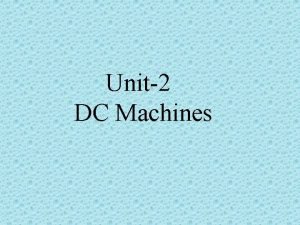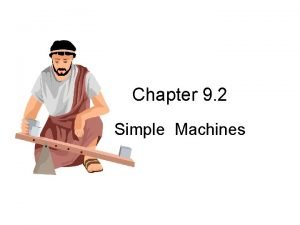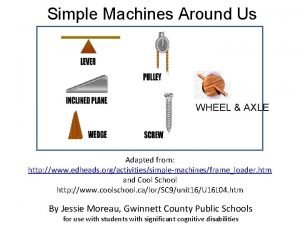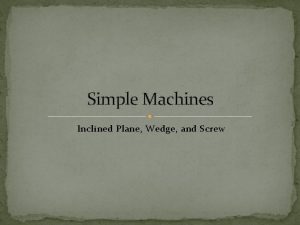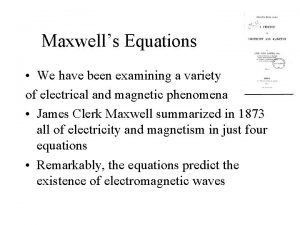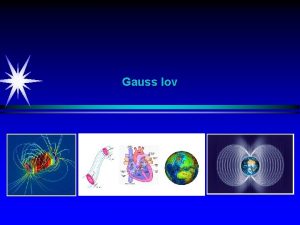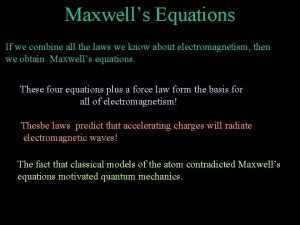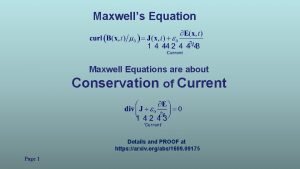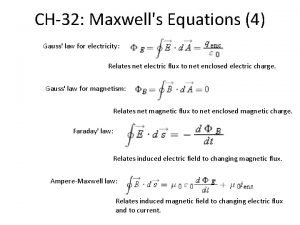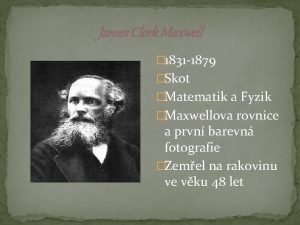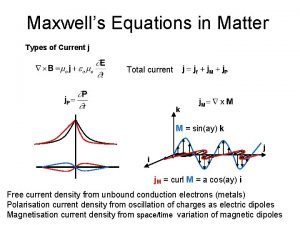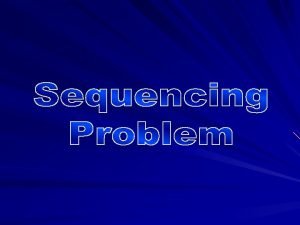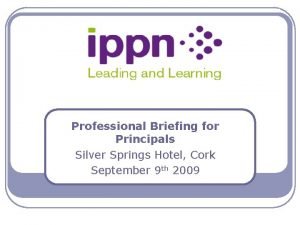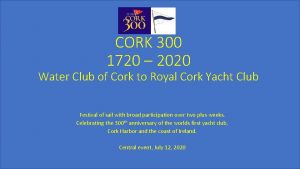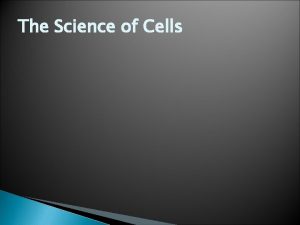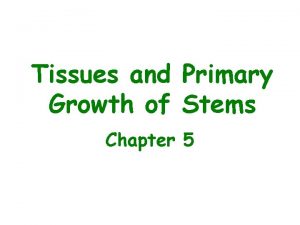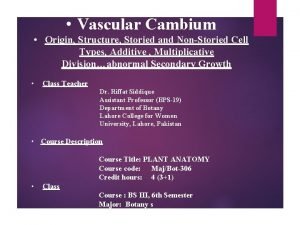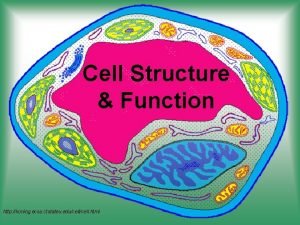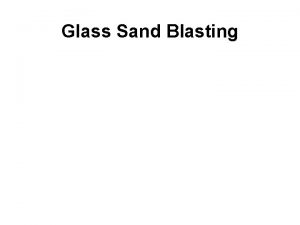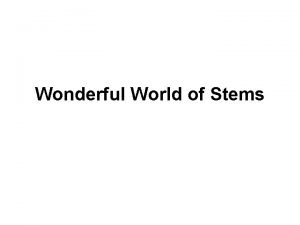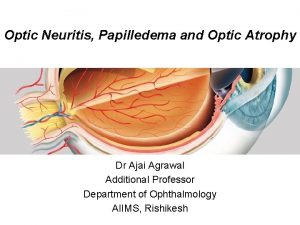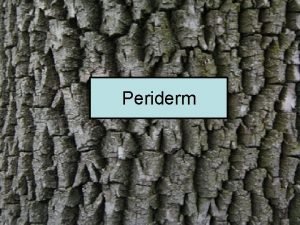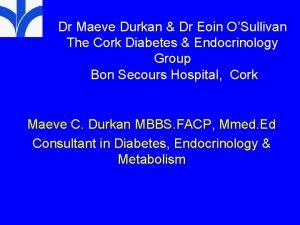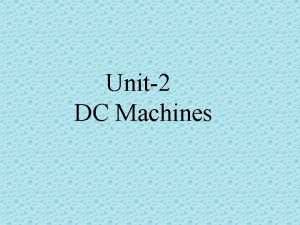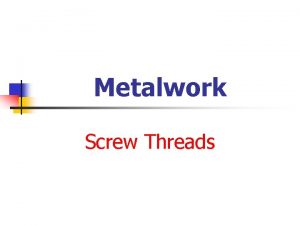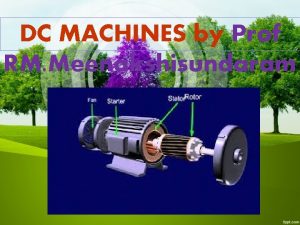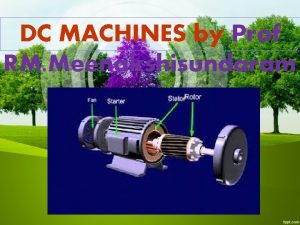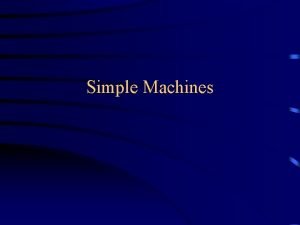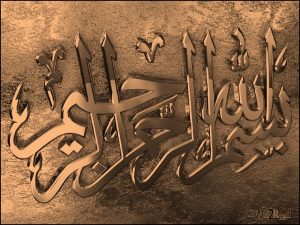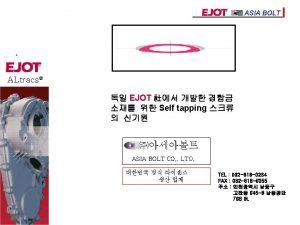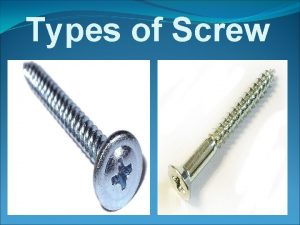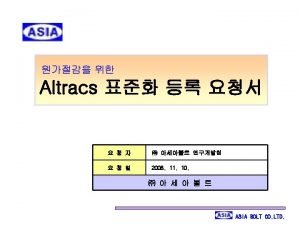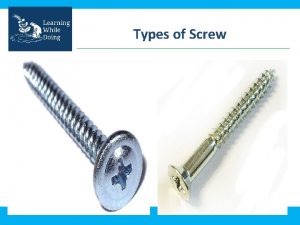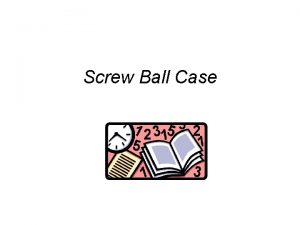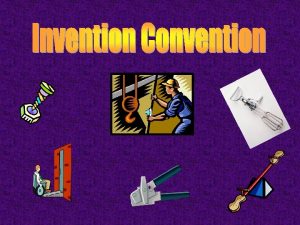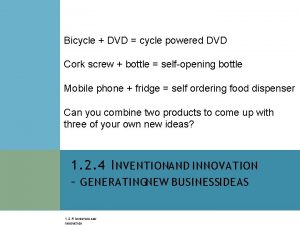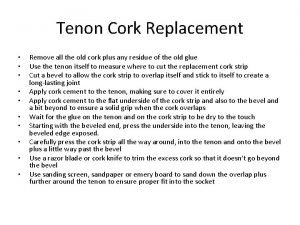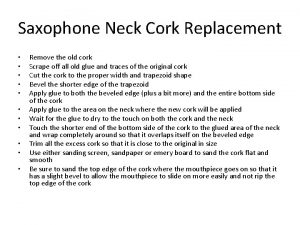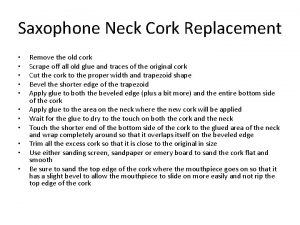Unit2 DC Machines Maxwells Cork screw Rule Maxwells































- Slides: 31

Unit-2 DC Machines

Maxwell’s Cork screw Rule :

Maxwell’s Cork screw Rule : Hold the cork screw in yr right hand rotate it in clockwise in such a way that it advances in the direction of current. Then the direction in which the hand rotates will be the direction of magnetic lines of force.

Fleming’s Right hand rule

Fleming’s left hand rule

Fleming’s left hand rule Used to determine the direction of force acting on a current carrying conductor placed in a magnetic field. The middle finger , the fore finger and thumb of the left hand are kept at right angles to one another. The middle finger represent the direction of current The fore finger represent the direction of magnetic field The thumb will indicate the direction of force acting on the conductor. This rule is used in motors

Fleming’s Right hand rule Used to determine the direction of emf induced in a conductor The middle finger , the fore finger and thumb of the left hand are kept at right angles to one another. The fore finger represent the direction of magnetic field The thumb represent the direction of motion of the conductor The middle finger will indicate the direction of the inducted emf. This rule is used in DC Generators

Len’s Law The direction of induced emf is given by Lenz’s law. According to this law, the induced emf will be acting in such a way so as to oppose the very cause of production of it. e = -N (dØ/dt) volts

DC Generator Mechanical energy is converted to electrical energy Three requirements are essential 1. Conductors 2. Magnetic field 3. Mechanical energy

Working principle A generator works on the principles of Faraday’s law of electromagnetic induction Whenever a conductor is moved in the magnetic field , an emf is induced and the magnitude of the induced emf is directly proportional to the rate of change of flux linkage. This emf causes a current flow if the conductor circuit is closed.

DC Machine Commutator

Sectional view of a DC machine

Construction of DC Generator Field system Armature core Armature winding Commutator Brushes

Field winding

Rotor and rotor winding

Working principle of DC motor

Working principle of DC motor

Armature winding There are 2 types of winding Lap and Wave winding Lap winding A=P The armature windings are divided into no. of sections equal to the no of poles Wave winding A=2 It is used in low current output and high voltage. 2 brushes

Field system consists of the following parts Yoke Pole cores Pole shoes Field coils

Armature core The armature core is cylindrical High permeability silicon steel stampings Impregnated Lamination is to reduce the eddy current loss

Commutator Connect with external circuit Converts ac into unidirectional current Cylindrical in shape Made of wedge shaped copper segments Segments are insulated from each other Each commutator segment is connected to armature conductors by means of a cu strip called riser. No of segments equal to no of coils

Carbon brushes are used in DC machines because they are soft materials It does not generate spikes when they contact commutator To deliver the current thro armature Carbon is used for brushes because it has negative temperature coefficient of resistance Self lubricating , takes its shape , improving area of contact

EMF equation Let, Ø= flux per pole in weber Z = Total number of conductor P = Number of poles A = Number of parallel paths N =armature speed in rpm Eg = emf generated in any on of the parallel path

EMF equation Flux cut by 1 conductor in 1 revolution =P*φ Flux cut by 1 conductor in 60 sec = P φ N /60 Avg emf generated in 1 conductor = PφN/60 Number of conductors in each parallel path = Z /A Eg = PφNZ/60 A

Types of DC Generator DC generators are generally classified according to their method of excitation. Separately excited DC generator Self excited D C generator

Further classification of DC Generator Series wound generator Shunt wound generator Compound wound generator Short shunt & Long shunt Cumulatively compound & Differentially compound

Back emf The induced emf in the rotating armature conductors always acts in the opposite direction of the supply voltage. According to the Lenz’s law, the direction of the induced emf is always so as to oppose the cause producing it. In a DC motor , the supply voltage is the cause and hence this induced emf opposes the supply voltage.

Classification of DC motors are mainly classified into three types as listed below: Shunt motor Series motor Compound motor Differential compound Cumulative compound

Torque The turning or twisting force about an axis is called torque. P = T * 2 πN/ 60 Eb Ia = Ta * 2 πN/ 60 T ∞φIa Ta ∞ I 2 a

Characteristic of DC motors T/ Ia characteristic N/ I a characteristic N/T characteristic

Starters for DC motors Needed to limit the starting current. 1. Two point starter 2. Three point starter 3. Four point starter
 Cork screw rule
Cork screw rule Board + simple machines of
Board + simple machines of Wheel and axle simple machines
Wheel and axle simple machines Oars simple machine
Oars simple machine Wedge and screw
Wedge and screw Some examples of screw
Some examples of screw Ampère's circuital law (with maxwell's addition)
Ampère's circuital law (with maxwell's addition) Blger
Blger Namblaa
Namblaa Maxwell's equations explained
Maxwell's equations explained Ampere maxwell's law
Ampere maxwell's law Maxwells equations
Maxwells equations Maxwell equations in matter
Maxwell equations in matter Johnson's rule of sequencing
Johnson's rule of sequencing Rainwater harvesting systems cork
Rainwater harvesting systems cork Dr matt hewitt wife
Dr matt hewitt wife Cork cambium vs vascular cambium
Cork cambium vs vascular cambium Silver spring hotel cork
Silver spring hotel cork Cork 300
Cork 300 Riddle cell
Riddle cell What is cork cambium and vascular cambium
What is cork cambium and vascular cambium Cambium rôle
Cambium rôle Kieran barry orthopaedic surgeon cork
Kieran barry orthopaedic surgeon cork Hooke saw tiny openings in cork and named them
Hooke saw tiny openings in cork and named them Sandblasting
Sandblasting Periderm
Periderm Progressing disability services cork
Progressing disability services cork Sinead boyce
Sinead boyce Pbirs download
Pbirs download Atrophy
Atrophy Cork cell
Cork cell Dr durkan
Dr durkan
